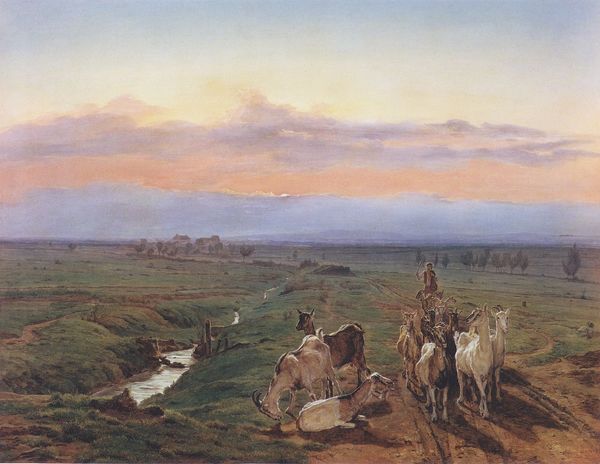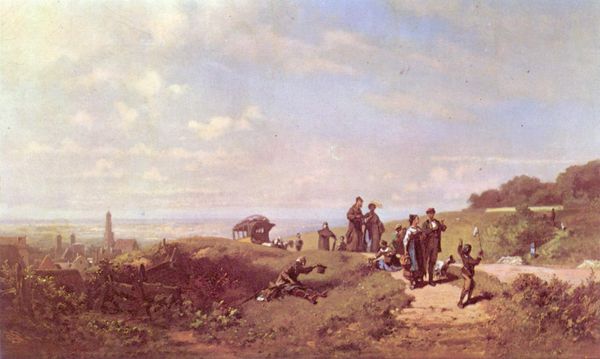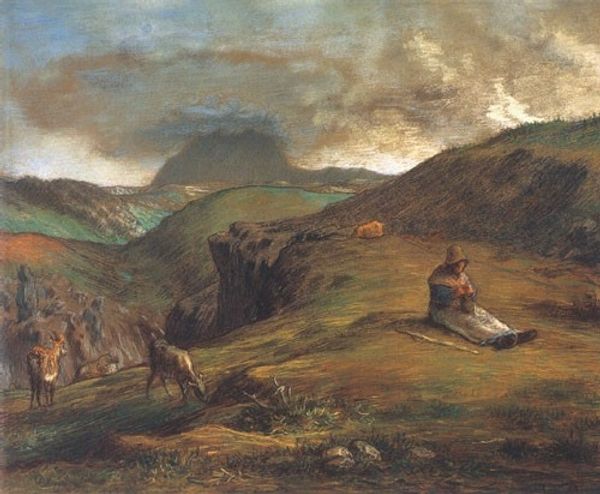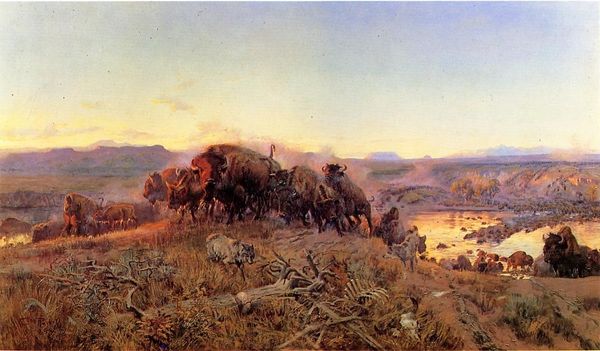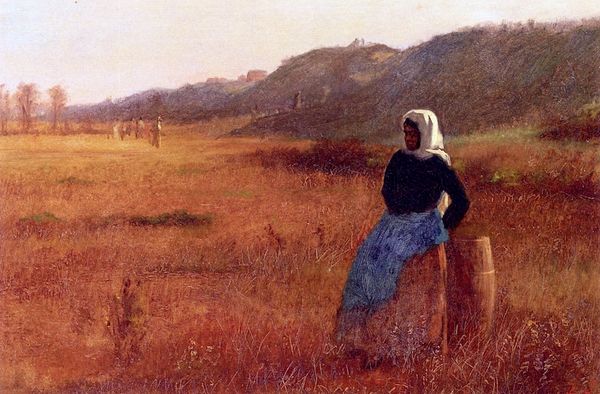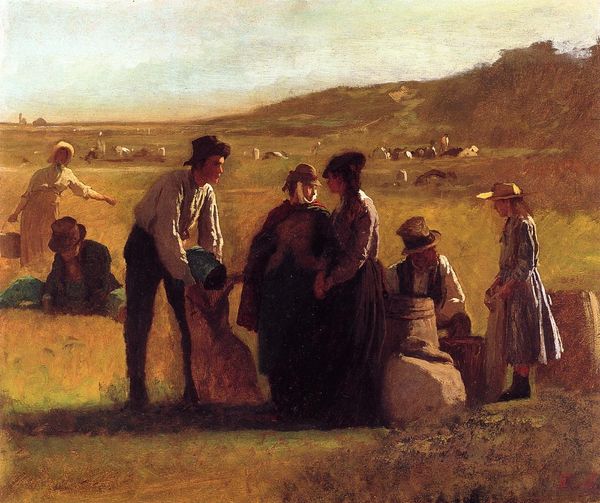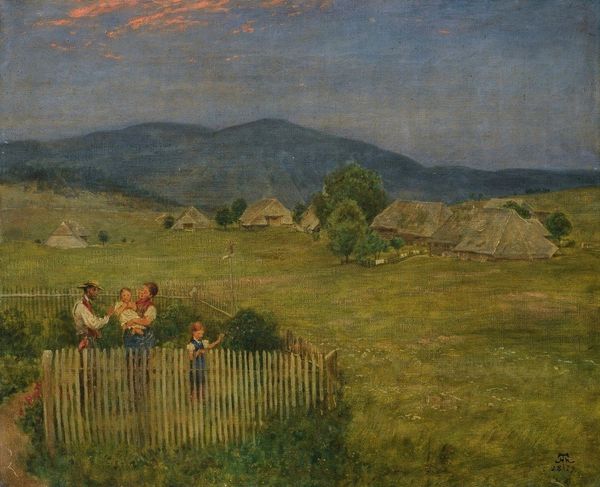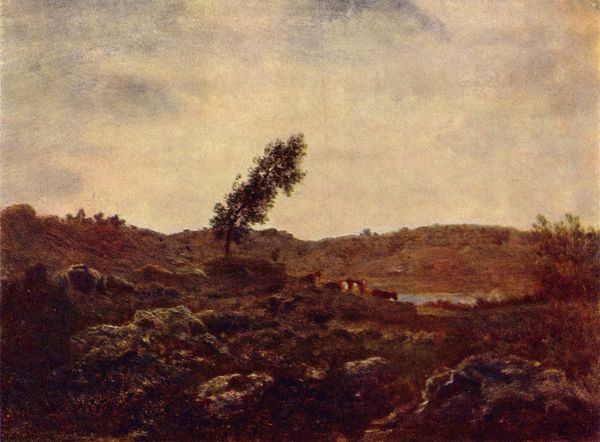
The Piegans Preparing to Steal Horses from the Crows 1888
0:00
0:00
charlesmrussell
Thyssen-Bornemisza Museum, Madrid, Spain
Copyright: Public domain
Curator: This is Charles M. Russell’s 1888 oil painting, “The Piegans Preparing to Steal Horses from the Crows,” currently housed in the Thyssen-Bornemisza Museum. Editor: It strikes me immediately as a scene steeped in anticipation. There’s a stillness in the composition, yet a clear sense of impending action. You can feel the weight of the gaze outwards towards that distant village and what this next action entails. Curator: Russell's meticulous attention to detail – from the patterns on the blankets to the textures of the earth and landscape that encompasses the gathering figures – offers a rich insight into the materials at hand and the Piegan people's deep connection to the environment in which they operated. The skull in the foreground provides a material counterpoint. Editor: Precisely! Consider, too, how the act of stealing horses is depicted. It's not merely a scene of theft; it's a reflection on power dynamics and colonial conflict. Horses held a particularly complicated space in Indigenous American societies and were subject to extremely controlled colonial and early U.S. trade. Russell places viewers in a position to consider the history of violence. Curator: I see it more as Russell, who came West as the open range was fading, is trying to freeze a way of life as industry and modernity started taking root. He wants us to understand their processes, how these men planned, conferred, and observed their surroundings. How crucial the resources are to their practices and future success. Editor: I appreciate that understanding. Yet, it's impossible to view this piece without also reflecting on the broader socio-political landscape of the time. How did representations like these shape the perceptions of Native peoples, especially from someone operating outside the Piegan nation? Is Russell’s perspective inflected through colonial stereotypes? It really forces us to question whose narrative is privileged in this artwork and where it originates. Curator: What I appreciate most here is how much tangible information Russell gives us through careful strokes that, when closely inspected, give access into understanding that perspective he's so committed to sharing, from the guns to the blankets to the adornments they bear and use. Editor: Indeed, it is a crucial point that this artwork prompts essential conversations. Curator: Absolutely. Conversations about historical context and perspective always enrich our understanding of these materials.
Comments
No comments
Be the first to comment and join the conversation on the ultimate creative platform.
